
International Journal of Radiation Research
Scope & Guideline
Fostering Collaboration in Radiation Research
Introduction
Aims and Scopes
- Radiobiology and Radiation Effects:
Research on the biological effects of radiation exposure, including mechanisms of radiation-induced damage, cellular responses, and the implications for cancer treatment and patient safety. - Diagnostic Imaging Techniques:
Studies that evaluate and improve diagnostic imaging modalities, such as CT, MRI, and ultrasound, particularly in the context of cancer detection and treatment planning. - Radiotherapy Techniques:
Innovations and evaluations of radiotherapy techniques, including intensity-modulated radiotherapy (IMRT), stereotactic body radiotherapy (SBRT), and brachytherapy, focusing on dosimetry, treatment outcomes, and side effects. - Cancer Research and Treatment:
Investigation of various cancer types, treatment responses, prognostic factors, and the development of novel therapeutic approaches involving radiation. - Environmental and Occupational Radiation Exposure:
Assessment of radiation exposure in various environments, including healthcare settings and residential areas, and the associated health risks. - Radiation Protection and Safety:
Studies focused on minimizing radiation exposure to patients and healthcare workers, improving safety protocols, and evaluating the effectiveness of protective measures.
Trending and Emerging
- Artificial Intelligence in Imaging:
There is a rising trend in the application of artificial intelligence and machine learning techniques for improving diagnostic accuracy and treatment planning in radiation therapy. - Radiomics and Personalized Medicine:
Emerging research in radiomics is gaining traction, focusing on extracting large amounts of features from medical images to predict treatment outcomes and personalize therapy. - Combination Therapies:
Research exploring the synergistic effects of combining radiation therapy with various chemotherapeutic agents and novel biological agents is increasingly prominent, reflecting a trend towards integrated treatment approaches. - Radiation-Induced Toxicity Management:
A growing body of work is focused on understanding and mitigating radiation-induced toxicities, including the use of protective agents and strategies to enhance patient safety during treatment. - Environmental Radiation Research:
There is an increasing interest in environmental and occupational radiation exposure studies, particularly in assessing the health impacts of low-level exposures in various populations.
Declining or Waning
- Traditional Imaging Techniques:
There has been a noticeable decrease in publications focused solely on traditional imaging techniques, such as plain radiography, as more emphasis is placed on advanced imaging modalities and their integration with AI. - Invasive Procedures:
Research on invasive radiological procedures has diminished, potentially due to the growing interest in non-invasive imaging and treatment methods that offer patient-centric alternatives. - Historical Radiation Studies:
Papers focusing on historical or retrospective studies of radiation exposure and its long-term effects are less prevalent, suggesting a shift towards more contemporary, forward-looking research. - Basic Radiobiology Studies:
While foundational studies remain important, there is less emphasis on purely basic radiobiology without direct clinical application, as researchers focus more on translational and applied research.
Similar Journals
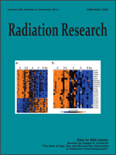
RADIATION RESEARCH
Elevating the discourse in biophysics and radiology.RADIATION RESEARCH is a prestigious journal published by the RADIATION RESEARCH SOC that serves as a vital resource for professionals and researchers in the fields of biophysics, radiation science, and radiology. Established in 1954, this journal has consistently advanced the study of radiation's effects on health and the environment, bridging fundamental and applied research. It boasts an impressive impact factor reflected in its quartile rankings, including Q2 in Biophysics and Q1 in Radiation, making it a highly regarded publication within its discipline. Researchers will find valuable insights through rigorous peer-reviewed articles that explore innovative methodologies and findings related to radiation exposure, imaging technologies, and the biological consequences of radiation. Although the journal does not currently offer open access, it remains a vital reference for academia and industry, fostering a deeper understanding of radiation sciences and their implications for future research and public health.
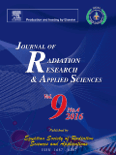
Journal of Radiation Research and Applied Sciences
Unlocking the potential of radiation in medicine and industry.Journal of Radiation Research and Applied Sciences, published by ELSEVIER, is a premier open-access journal since 2013, dedicated to advancing the understanding and application of radiation research in various fields. With an ISSN of 1687-8507, this journal serves as a vital resource for researchers, professionals, and students engaged in the study of the physical and biological effects of radiation, radiation physics, and its applications in medicine and industry. Its rigorous peer-review process ensures the dissemination of high-quality research that meets the growing demands for innovative solutions in radiation science. By offering comprehensive access options, the journal promotes an inclusive approach to sharing knowledge with the global community. The Journal of Radiation Research and Applied Sciences stands out as a key platform for scholarly communication, fostering advancements that impact both theory and practice in the rapidly evolving landscape of radiation research.
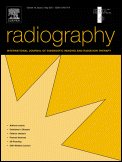
Radiography
Exploring the Depths of Diagnostic ExcellenceRadiography is a premier academic journal published by ELSEVIER SCI LTD that focuses on the vital disciplines of radiology, nuclear medicine, and imaging technology. With an ISSN of 1078-8174 and an E-ISSN of 1532-2831, this journal has earned an impressive reputation, consistently ranking in the top quartiles across multiple categories in the 2023 Scopus rankings, including Q1 in Assessment and Diagnosis and Q1 in Research and Theory. Spanning decades of research from 1995 to 2024, Radiography provides a platform for cutting-edge studies, innovative techniques, and clinical advancements, making it essential reading for researchers, healthcare professionals, and students engaged in the fields of radiological sciences. Operating from the United Kingdom, and while not an Open Access journal, it offers a broad array of access options through institutional subscriptions, ensuring that critical research is available to stakeholders in the health professions. The journal's focus on both theoretical and practical aspects further underscores its role as a key resource in enhancing diagnostic practices and improving patient outcomes in the healthcare industry.
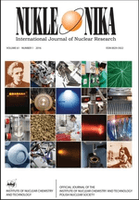
NUKLEONIKA
Fostering Collaboration in Interdisciplinary ResearchNUKLEONIKA, published by SCIENDO, is a leading open access journal that has been serving the scientific community since its establishment in 1968. Focused on the domains of Nuclear and High Energy Physics, Condensed Matter Physics, and Nuclear Energy and Engineering, this journal provides a platform for innovative research and technological advancements in a variety of interdisciplinary fields. With an impressive history of publications and a current Q3 ranking in several categories, including Safety, Risk, Reliability and Quality and Waste Management and Disposal, NUKLEONIKA is recognized for its significant contributions to scientific discourse. Open access since 2014, the journal ensures that all research outputs are freely available, facilitating broad dissemination and accessibility for researchers, professionals, and students alike. Located in the heart of Warsaw, Poland, NUKLEONIKA aims to inspire collaborative efforts and foster a deeper understanding of complex physical phenomena and their practical implications.
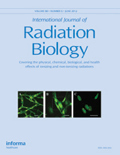
INTERNATIONAL JOURNAL OF RADIATION BIOLOGY
Shaping the Future of Radiological PracticesINTERNATIONAL JOURNAL OF RADIATION BIOLOGY, published by Taylor & Francis Ltd, has established itself as a premier forum for the dissemination of innovative research related to radiation biology, covering emerging topics that are crucial within the fields of radiology, nuclear medicine, and ultrasound technology. With an ISSN of 0955-3002 and an E-ISSN of 1362-3095, this journal spans over six decades, from its inception in 1959 to 2024, reflecting a rich history of scholarly contribution and a dynamic approach to addressing current challenges in the discipline. Its reputation is highlighted by its Q2 rankings in both Radiology, Nuclear Medicine and Imaging and Radiological and Ultrasound Technology for 2023, underscoring its relevance in a competitive academic landscape, with Scopus rankings placing it in the top tier of its category. While operating under a traditional access model, the journal aims to connect researchers, professionals, and students, facilitating the advancement of knowledge and fostering a deeper understanding of the impact of radiation in various medical applications. The journal plays an essential role in shaping future research directions and enhancing clinical practices globally.

QUARTERLY JOURNAL OF NUCLEAR MEDICINE AND MOLECULAR IMAGING
Unveiling Breakthroughs in Nuclear Medicine and Molecular Imaging.The Quarterly Journal of Nuclear Medicine and Molecular Imaging, published by Edizioni Minerva Medica in Italy, serves as a pivotal platform for researchers and practitioners in the fields of Nuclear Medicine and Molecular Imaging. With an ISSN of 1824-4785 and an E-ISSN of 1827-1936, this journal boasts a respectable impact factor and is positioned in the Q3 quartile of the Radiology, Nuclear Medicine and Imaging category, based on the latest 2023 evaluations. As the journal continues to converge from its inception in 2004 to its anticipated expansions through 2024, it aims to disseminate high-quality, peer-reviewed articles that advance the frontier of imaging technologies and their applications in clinical practice. Researchers, professionals, and students are encouraged to contribute to its diverse scope, which encompasses innovative research, clinical findings, and reviews that encapsulate cutting-edge advancements in the field, highlighting its importance as an essential resource for knowledge and collaboration.
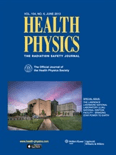
HEALTH PHYSICS
Innovating Solutions for Safe Radiation PracticesHEALTH PHYSICS is a leading academic journal dedicated to the study and dissemination of knowledge in the fields of radiology, epidemiology, and health toxicology. Published by Lippincott Williams & Wilkins, this esteemed journal has been a cornerstone of research since its inception in 1958, and it continues to foster important discussions and advancements in the discipline. With a notable impact factor and consistently ranking in the Q2 and Q3 quartiles across various categories in 2023, HEALTH PHYSICS serves as a vital resource for scholars, practitioners, and students seeking the latest insights and methodologies in the management of radiation exposure and its health implications. While the journal does not offer open access, it remains a critical platform for peer-reviewed articles that contribute to public health and environmental safety. The journal's comprehensive scope and historical significance underscore its importance in advancing knowledge and practices within its field, making it an essential read for anyone engaged in the multidisciplinary realms of health physics.

Radiological Physics and Technology
Bridging disciplines for a healthier tomorrow.Radiological Physics and Technology, published by SPRINGER JAPAN KK, is a prominent journal that serves as a crucial resource in the multidisciplinary fields of medicine and radiation sciences. With an ISSN of 1865-0333 and an E-ISSN of 1865-0341, the journal has been converging impactful research from 2008 to 2024. It holds a commendable position in academic rankings, currently classified in Q2 in Physical Therapy, Sports Therapy and Rehabilitation and Radiation, along with Q3 for Medicine (miscellaneous) and Radiology, Nuclear Medicine and Imaging. The journal is well-regarded in the academic community, reflected in its Scopus rankings that place it in the upper tiers of its respective categories. Although it currently does not offer Open Access, Radiological Physics and Technology remains a pivotal publication for researchers, academics, and practitioners seeking to advance knowledge and foster innovation in radiological science. Its commitment to disseminating high-quality research ensures its continued relevance and importance within these fields.
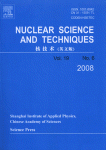
Nuclear Science and Techniques
Fostering Collaboration in the Nuclear CommunityNuclear Science and Techniques is a distinguished peer-reviewed journal published by Springer Singapore Pte Ltd, dedicated to advancing the fields of nuclear science and engineering. With an impressive impact factor reflected in its 2023 quartile rankings—Q2 in Nuclear and High Energy Physics and Q1 in Nuclear Energy and Engineering—the journal serves as a vital resource for researchers, professionals, and students alike. Covering a breadth of topics from nuclear physics to energy applications, it offers a platform for innovative research and developments in the nuclear domain. The journal, indexed under ISSN 1001-8042 and E-ISSN 2210-3147, aims to foster scientific exchange and collaboration within the community by publishing high-quality articles that contribute significantly to the field. Committed to maintaining an open-access ethos, it enhances visibility and accessibility of critical knowledge, making it an essential source for current insights and trends in nuclear science.

Journal of Radiation Protection and Research
Bridging Science and Practice in Radiation ProtectionJournal of Radiation Protection and Research, published by the Korean Association of Radiation Protection (KARP), serves as a pivotal platform for disseminating innovative research in the fields of radiation safety and health-related issues. With an ISSN of 2508-1888 and an E-ISSN of 2466-2461, this South Korea-based journal aims to bridge the gap between scientific research and practical application, emphasizing radiation protection, environmental health, and public safety. Though categorized in Q4 for Health, Toxicology and Mutagenesis, and Q3 for several other scopes as of 2023, the journal is dedicated to publishing high-quality studies that contribute to the improvement of safety standards and methodologies in radiation practice. The journal also provides valuable insights for practitioners in the healthcare and environmental sectors, making it an essential resource for researchers, professionals, and students alike who aspire to advance their understanding and application of radiation science. As the field evolves, so does the Journal of Radiation Protection and Research, which seeks to foster a collaborative and innovative academic community dedicated to ensuring safe and effective radiation use.